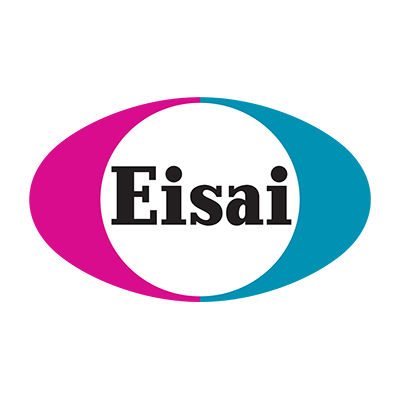Request Demo
Last update 08 May 2025
TNKS1 x TNKS2
Last update 08 May 2025
Related
17
Drugs associated with TNKS1 x TNKS2Mechanism PARP1 inhibitors [+3] |
Active Org. |
Originator Org. |
Active Indication |
Inactive Indication |
Drug Highest PhasePhase 2 |
First Approval Ctry. / Loc.- |
First Approval Date20 Jan 1800 |
Target |
Mechanism TNKS1 inhibitors [+1] |
Active Org. |
Originator Org. |
Active Indication |
Inactive Indication |
Drug Highest PhasePhase 1 |
First Approval Ctry. / Loc.- |
First Approval Date20 Jan 1800 |
Target |
Mechanism TNKS1 inhibitors [+1] |
Active Org. |
Originator Org. |
Active Indication |
Inactive Indication- |
Drug Highest PhasePhase 1 |
First Approval Ctry. / Loc.- |
First Approval Date20 Jan 1800 |
9
Clinical Trials associated with TNKS1 x TNKS2NCT06853496
Investigator-initiated Phase I Study of a Tankyrase Inhibitor RK-582 for Patients with Unresectable Metastatic Colorectal Cancer
Tankyrase, the fifth and sixth members of the poly(ADP-ribose) polymerase (PARP) family (PARP-5a/b), is responsible for poly(ADP-ribosyl)ation (PARylation), and was originally identified as a factor that promotes the function of telomerase, an enzyme that elongates telomeres. Subsequently, it was reported that tankyrase enhances Wnt/beta-catenin signaling by PARylation and subsequent degradation of AXIN, a negative regulator of Wnt/beta-catenin signaling, suggesting that tankyrase inhibitors may be a new treatment for colorectal cancer.
RK-582 was discovered through lead optimization from a tankyrase inhibitor that suppresses the growth of human colorectal cancer cells. It was confirmed that RK-582 selectively inhibited tankyrase among the PARP family enzymes, suppressed the growth of Wnt/beta-catenin signal-dependent human colorectal cancer cells at both the levels of cultured cells and xenograft tumors in immunodeficient mice, and accumulated AXIN to decrease beta-catenin and downregulate the target gene expression as pharmacodynamic biomarkers.
Based on these findings, RK-582 is thought to have potential as a new treatment for colorectal cancer patients. At present, however, the efficacy and safety of RK-582 in humans have not been confirmed. Thus, this clinical trial is conducted with the aim of investigating the tolerability and safety of RK-582 for patients with unresectable advanced or recurrent colorectal cancer as a first-in-human trial, in which RK-582 is administered to humans for the first time.
RK-582 was discovered through lead optimization from a tankyrase inhibitor that suppresses the growth of human colorectal cancer cells. It was confirmed that RK-582 selectively inhibited tankyrase among the PARP family enzymes, suppressed the growth of Wnt/beta-catenin signal-dependent human colorectal cancer cells at both the levels of cultured cells and xenograft tumors in immunodeficient mice, and accumulated AXIN to decrease beta-catenin and downregulate the target gene expression as pharmacodynamic biomarkers.
Based on these findings, RK-582 is thought to have potential as a new treatment for colorectal cancer patients. At present, however, the efficacy and safety of RK-582 in humans have not been confirmed. Thus, this clinical trial is conducted with the aim of investigating the tolerability and safety of RK-582 for patients with unresectable advanced or recurrent colorectal cancer as a first-in-human trial, in which RK-582 is administered to humans for the first time.
Start Date13 Mar 2025 |
Sponsor / Collaborator |
NCT05571969
A Phase Ib, Open Label, Multicenter Study to Determine the Maximum Tolerated Dose (MTD) of PARPi 2X-121 Monotherapy and the MTD of Dovitinib in Combination With 2X-121 in Patients With Advanced Solid Tumors
This is a Phase Ib, two-part, multi-center study. In Part 1, the study will evaluate the safety and tolerability, antitumor activity, pharmacokinetics, and determine the maximum tolerated dose (MTD) of 2X-121 monotherapy (at BID regimen) in patients with advanced solid tumors. In Part 2, the study will evaluate safety and tolerability, antitumor activity, pharmacokinetics and determine the MTD of dovitinib when given in combination with the MTD of 2X-121 determined in Part 1.
Start Date20 Feb 2023 |
Sponsor / Collaborator |
100 Clinical Results associated with TNKS1 x TNKS2
Login to view more data
100 Translational Medicine associated with TNKS1 x TNKS2
Login to view more data
0 Patents (Medical) associated with TNKS1 x TNKS2
Login to view more data
104
Literatures (Medical) associated with TNKS1 x TNKS201 Apr 2025·European Journal of Medicinal Chemistry
Substitutions at the C-8 position of quinazolin-4-ones improve the potency of nicotinamide site binding tankyrase inhibitors
Article
Author: Kampasis, Dionysis ; Lehtiö, Lari ; Karelou, Maria ; Waaler, Jo ; Brinch, Shoshy A ; Bosetti, Chiara ; Galera-Prat, Albert ; Kostakis, Ioannis K ; Dhakar, Saurabh S ; Alaviuhkola, Juho
01 Feb 2025·Theriogenology
Tankyrase inhibitor IWR-1 modulates HIPPO and Transforming Growth Factor β signaling in primed bovine embryonic stem cells cultured on mouse embryonic fibroblasts
Article
Author: Hu, Peng ; Ju, Zhihua ; Zhang, Yaran ; Huang, Jinming ; Yang, Chunhong ; Zhang, Yan ; Xiao, Yao ; Wang, Yujie ; Wei, Xiaochao ; Gao, Yundong ; Gao, Yaping ; Wang, Xiuge ; Wang, Jinpeng ; Zhang, Minghao ; Jiang, Qiang ; Liu, Wenhao
01 Feb 2025·Current Pharmaceutical Biotechnology
Exploring the Effects of Chirality of 5-methyl-5-[4-(4-oxo-3H-quinazolin-2- yl)phenyl]imidazolidine-2,4-dione and its Derivatives on the Oncological Target Tankyrase 2. Atomistic Insights
Article
Author: Alahmdi, Mohamed I. ; Salifu, Elliasu. Y. ; Poonan, Preantha ; Abo-Dya, Nader E. ; Soliman, Mahmoud E. S. ; Peters, Xylia Q.
Analysis
Perform a panoramic analysis of this field.
login
or

AI Agents Built for Biopharma Breakthroughs
Accelerate discovery. Empower decisions. Transform outcomes.
Get started for free today!
Accelerate Strategic R&D decision making with Synapse, PatSnap’s AI-powered Connected Innovation Intelligence Platform Built for Life Sciences Professionals.
Start your data trial now!
Synapse data is also accessible to external entities via APIs or data packages. Empower better decisions with the latest in pharmaceutical intelligence.
Bio
Bio Sequences Search & Analysis
Sign up for free
Chemical
Chemical Structures Search & Analysis
Sign up for free



